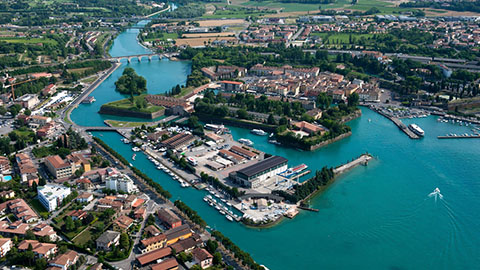Carlo Goldoni
Carlo Goldoni, considered one of the forefathers of modern comedy, used to tell how, often, the most interesting part of the travels he would undertake was the one he spent on board the above mentioned Burchiello, where some colourful meetings would take place amongst nobles, comedians, upper class ladies and artists. Also Goethe and D'Annunzio dedicated some of their verses to the landscapes that could be seen along the Brenta river.
'Musa, we sing of that Burchiello from Padua
It is a delightful, comfortable vehicle
Through which we smoothly travel along the Brenta river,
Protected from the cold and from the summer heat.
I speak of the one that every morning shows up
For passengers on their way to Padua;
Not of the ugly evening boat,
Rife with cripples, blind people and barrators,
From which a horrible, screechy voice
Usually shouts from the pontoon towards Fusina (...)
I speak of that graceful Waterway
Decorated with mirrors, and engravings, and paintings,
Which moves forward by one mile every twenty minutes,
As a good tow pulled by horses;
Where with no fears nor danger,
One can comfortably seat or sleep.'
Padua's Burchiello by
Carlo Goldoni















